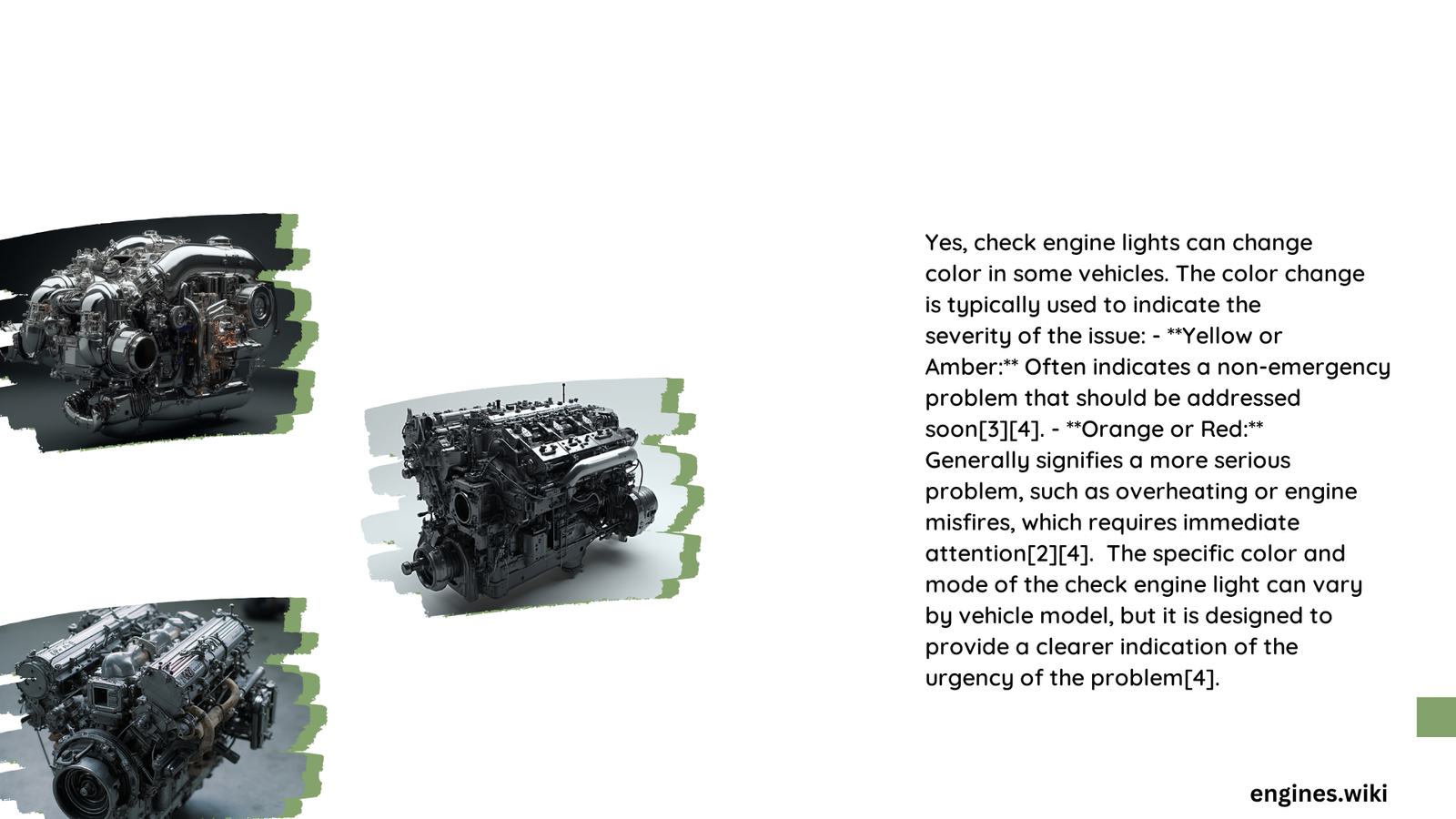Check engine lights are sophisticated diagnostic tools that communicate vehicle health through color variations and patterns. These warning signals transition between colors like yellow and red, providing critical insights into potential mechanical issues. Drivers can interpret these color changes to understand the urgency and severity of their vehicle’s problems, ranging from minor sensor malfunctions to potentially catastrophic engine failures.
What Causes Check Engine Lights to Change Color?
Can Check Engine Lights Actually Change Colors?
Yes, check engine lights can change colors and patterns to signal different levels of vehicle system problems. The primary color transitions include:
- Yellow/Amber: Standard warning indicating minor issues
- Red/Orange: Signaling critical problems requiring immediate attention
- Flashing vs. Steady: Indicating problem severity
How Do Color Transitions Work?
| Color | Meaning | Typical Issues | Recommended Action |
|---|---|---|---|
| Yellow | Minor Problem | Loose gas cap, sensor malfunction | Schedule diagnostic check |
| Red | Critical Issue | Engine misfire, transmission failure | Stop driving, immediate inspection |
| Flashing | Severe Potential Damage | Catalytic converter risk | Immediate professional diagnosis |
What Triggers Color Changes?
Vehicle computer systems (Engine Control Module) continuously monitor multiple sensor inputs. When specific thresholds are exceeded, the check engine light changes color and pattern to communicate the problem’s urgency.
Key Diagnostic Factors
- Sensor data readings
- Engine performance metrics
- Emission system health
- Electrical system integrity
Why Should Drivers Pay Attention?
Ignoring check engine light color changes can lead to:
– Increased repair costs
– Potential vehicle damage
– Reduced fuel efficiency
– Compromised driving safety
Expert Diagnostic Recommendations
Immediate Actions:
– Do not ignore color changes
– Use diagnostic scanning tools
– Consult professional mechanics
– Address issues promptly
Technical Insights
Modern vehicles utilize sophisticated onboard diagnostic (OBD-II) systems that generate specific trouble codes corresponding to different color signals. These codes provide precise information about potential mechanical or electrical problems.
Common Color Transition Scenarios
Yellow to Flashing Yellow
- Indicates escalating sensor or system problem
- Requires immediate diagnostic evaluation
Steady Yellow to Red
- Suggests critical system failure
- Potential risk of significant mechanical damage
Cost Implications
| Light Color | Average Diagnostic Cost | Potential Repair Range |
|---|---|---|
| Yellow | $50 – $250 | Minor repairs |
| Red | $500 – $2,000 | Major system repairs |
Prevention and Maintenance
Regular vehicle maintenance can help prevent unexpected check engine light color changes by:
– Performing scheduled inspections
– Using quality automotive parts
– Addressing minor issues promptly
– Maintaining proper fluid levels
Conclusion

Understanding check engine light color changes empowers drivers to make informed decisions about vehicle maintenance and potential repairs. Always prioritize professional diagnostic assessment when warning signals appear.
